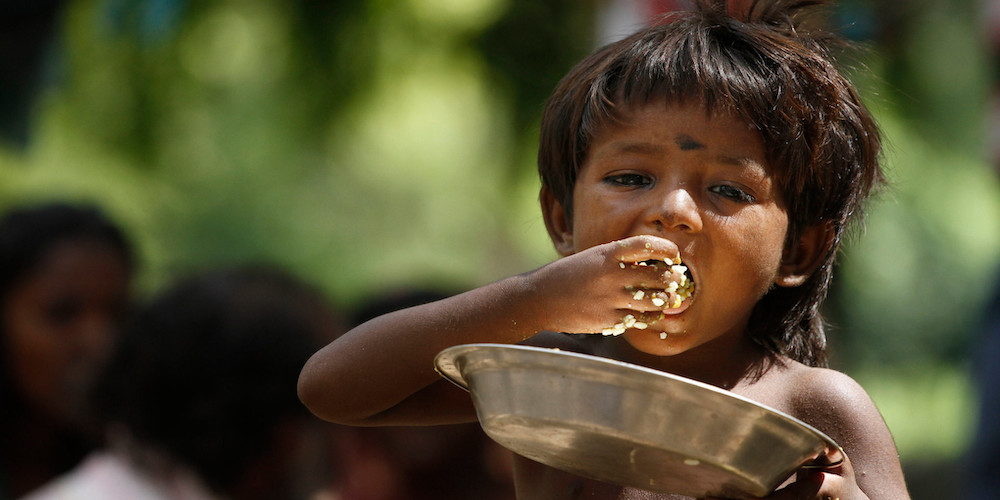Beyond Hunger: Advancing from Food Security to Nutrition Security

Agricultural policies should promote diet diversity and encourage micronutrient-rich crops production, such as pulses, fruits, vegetables, and coarse grains
Achieving Sustainable Development Goal (SDG) 2 of Zero Hunger by 2030 remains a critical global challenge. Food and Agriculture Organization (FAO) assesses global hunger measured by prevalence of undernourishment (POU) – SDG
Despite commitments from various nations, the POU remains a persistent concern, with an estimated 733 million people facing hunger in 2023 (SOFI, FAO, 2024), and 2.33 billion people facing either extreme or moderate food insecurity.
The pandemic and geo-political disruptions exacerbated global inequalities, disrupting food supply chains, and increasing the vulnerability of populations at risk. Hunger is not just food scarcity but is about food access and availability. Globally, policy makers agree that eradicating hunger requires transitioning from food security to food and nutrition security. Asia has the largest number with more than half the share of people facing hunger in the world (384.5 million).
Among the countries with highest number of undernourished people, India has the highest (194.6 million) followed by Pakistan (48.8 million) and Nigeria (39.4 million). In Africa, 298.4 million people faced hunger in 2023 (FAO, 2023). In that sense, Asia, especially South Asia, and Africa, ought to be the focal points for those committed to abolish hunger from this planet. Achieving SDG 2 will require more than business as usual, targeted interventions to improve agricultural productivity, enhance food access, and address nutritional (healthy diets) requirements, along with policy reforms to strengthen resilience in food systems globally.
Food security focuses on ensuring that people have enough to eat while nutrition security deals with the need for a balanced diet that provides essential nutrients required for healthy growth and development . This is essential as malnutrition, stunting, wasting and infant mortality rates are a recurring problem among children and women in the developing nations.
According to the State of Food Security and Nutrition in the World (SOFI) 2023 report, India’s POU has gradually declined over the years, reaching 13.7 percent in 2022, which is lower than other countries with similar per capita income.
However, despite this progress, India still has the highest number of undernourished people globally Malnutrition is not only a consequence of poverty but also a driver of poverty, inequality, and human capital loss, perpetuating a vicious cycle of deprivation. Therefore, advancing from food security to food and nutrition security is vital for achieving the UNSDGs.
Food Security and Nutrition Security in the Global Context
Based on World Food Summit (1996), food security is defined when “all people, at all times, have physical, social, and economic access to sufficient, safe, and nutritious food that meets their dietary needs for an active and healthy life” (FAO, 1996). Numerous countries have improved food security but there are significant disparities in access to nutritious diets globally as seminal reports like the SOFI show.
Nutrition security is achieved “when all people at all times consume food of sufficient quantity and quality in terms of variety, diversity, nutrient content, and safety to meet their dietary needs and food preferences for an active and healthy life” (FAO, 2012). Over 2.8 billion people were unable to afford a healthy diet in 2022, and this is expected to grow (FAO, 2023).
Low-income countries bear the brunt of food insecurity. In 2022, 71.5 percent of the population in these countries could not afford a healthy diet, compared to 6.3 percent in high income countries (FAO, 2023). Although there is a declining trend in India since 2014 (except during the pandemic period), 55.6 percent people could not afford a healthy diet basket in 2022. These disparities are further deepened by food systems that favour staple crops like rice and wheat, which focus on calorie needs.

Food Security and Nutrition Status of India
India, with a population of 1.428 billion people as of 2023, faces significant challenges in addressing both food security and nutrition (UNICEF, 2023). India has made commendable strides in increasing food grain production (330 million tonnes in 2022-23) and achieving food security through public distribution systems (PDS) (free food grains to 813.5 million population) and social safety nets (GoI, 2023) yet transitioning from food security to nutrition security demands more than just increasing the agricultural output.
It requires transforming how we produce, distribute, and consume food. The focus on staple grains such as rice and wheat has led to a neglect of more nutrient-rich foods, such as pulses, fruits, and vegetables.
Despite improvements in mortality and stunting wasting, a significant proportion of children remain undernourished. This underscores the limitations of India’s current food system, which meets the calorie needs but not the broader spectrum of nutritional needs.
India’s PDS has played a pivotal role in addressing caloric deficiencies, distributing free food grains to more than 813.5 million people. However, the PDS is biased towards rice and wheat which is essential but has failed to address nutritional needs. A close observation of the per capita availability of the food grains (GoI, 2023) indicate that per capita availability of pulses is lowest among rice, wheat, and food grains.
The Indian government’s focus on food grain security must include nutritional security by increasing the availability of pulses, coarse grains, and other nutrient-rich crops.
Way Ahead: Policies and Investments to Enhance Food Security and Nutrition
Harmonizing agriculture, health policies and social safety nets are vital to advance from food security to nutrition, as India works towards achieving the SDGs by 2030. Comprehensive and multi-pronged approaches are needed to transform from food security to nutritional security. The Indian Council for Research on International Economic Relations study on “Achieving Nutritional Security in India: Vision 2030” based on unit-level data from three rounds of the National Family Health Survey (NFHS), revealed that diets account for one-third of the story, while another one-third is attributed to women’s education, ensuring proper nutrition, healthcare access, and immunization; and the remaining one-third focuses on Water, Sanitation, and Hygiene (WASH) initiatives and the role of clean water and sanitation facilities in achieving better health and nutrition.
Agricultural policies should promote diet diversity and encourage micronutrient-rich crops production, such as pulses, fruits, vegetables, and coarse grains. Agricultural programmes need to evolve beyond increasing yields or subsidy centric approach for rice and wheat. The policies need to focus on augmenting farmers’ income while ensuring access and availability to healthy and nutritious foods. As discussed above, India’s food safety nets, have made commendable strides in ensuring food security, however, their bias towards rice and wheat is problematic, and the government needs to shift focus from calorie rich staples to diverse and nutritious foods.
GoI has started many programs to address the issue of malnutrition. These programs range from fortification of rice in PDS to biofortification of basic cereals (like zinc rich rice and wheat, iron rich pearl millet, etc). Other experts also highlighted the multiplier effect of investing in women’s education towards food and nutrition security.
Another priority is interconnectedness of nutrition with WASH. Nutrition sensitive interventions could be paired with WASH efforts in line with the Swachh Bharat Abhiyan, especially in vulnerable communities for better nutrition outcomes. Transforming from food security to nutrition also requires financing to ensure stable, safe, inclusive, and nutritious food access for everyone.
(Courtesy – ICRIER)


